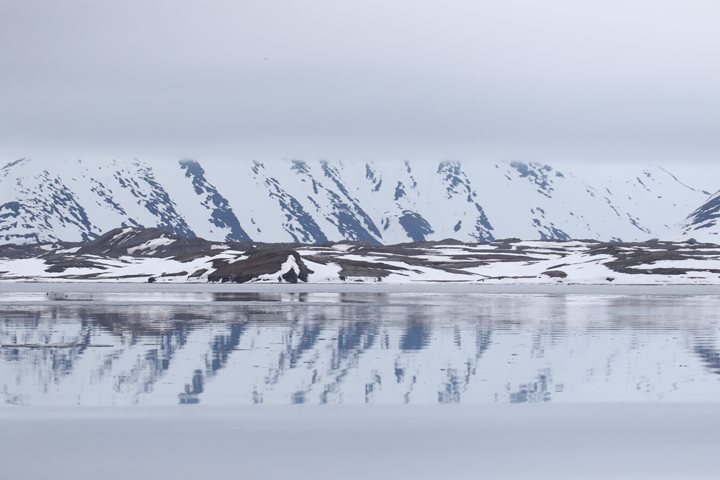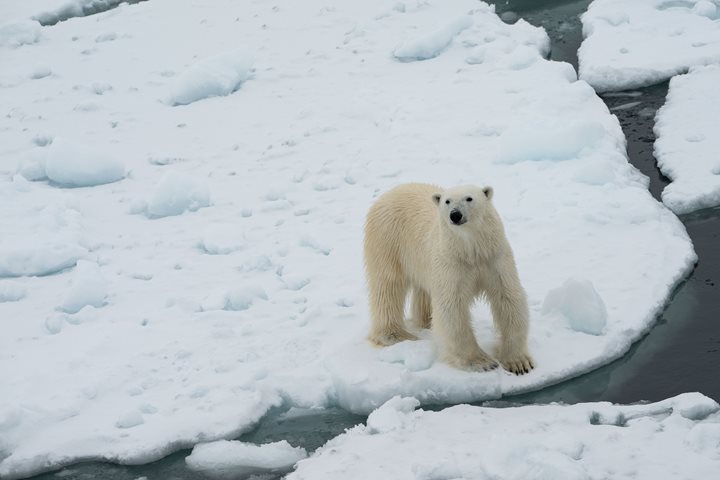Hinlopen Strait
We awoke this morning to gleaming sunshine as we rounded the northern shores of Spitsbergen Island. Brilliant blue skies, a light wind and a gentle sea carried us into our anchorage in Sorgfjorden – “the Fjord of Sorrow,” site of a brutal 17-century naval battle between the French and the Dutch.
Lingering snow still covered much of the landscape, but on walks ashore we found patches of open gravel that revealed nesting eider ducks and Arctic terns. Three reindeer, still in their slightly tattered winter coats, ran across the tundra, while a line of fresh polar bear tracks let us know that although no bears were visible, they regularly patrol these shores, left behind by the retreating pack ice. Some of us, exploring the beach, stumbled onto the enormous skull of a bowhead whale, once common here but extirpated by early whalers.
During lunchtime, the National Geographic Explorer turned into Hinlopen Strait, the broad passage that divides Svalbard’s two main islands: Spitsbergen and Nordaustlandet. Then word came from the bridge: bears had been spotted on the shoreline –– a mother and young cub crossing a snowfield, headed towards the beach. Everyone grabbed their coats and cameras and rushed to the deck to see the first polar bears of the trip.
This was quickly followed by an unexpected surprise: a third bear, a huge male, sleeping near the shore, apparently having scavenged a meal from an unknown carcass. Male polar bears can kill young cubs, and as soon as the mother saw him, she immediately retreated. It was a thrill not just to see these handsome animals, but also to observe their wary interaction.
Continuing down the strait we arrived at Cape Fanshawe, where hundreds of thousands of thick-billed murres crowded the narrow ledges on towering cliffs in a spectacle of motion and sound. It was like a gigantic avian city, the sea and sky filled with birds.
And finally, in the evening, we poked into the glassy waters of Vaigattbogen, a wide bay backed by a massive glacier. Although most of the sea ice has gone around the islands, this area still has a broad expanse of intact ice, which proved to be a magnet for polar bears. By the end of the evening we had seen no less than five more bears, all patrolling the ice in search of seals.
The highlights of the evening included a curious bear that approached very close to the ship, to the sound of thousands of clicking shutters, and another that tried, in vain, to ambush a resting seal. But, in the end, the show was stolen by a second mother and cub pair. In a moment that few of us will ever forget, the mother swam across a narrow channel, carrying her baby high on her back.
Finally, near midnight, we sailed north again at the end of an extraordinary Arctic day.






